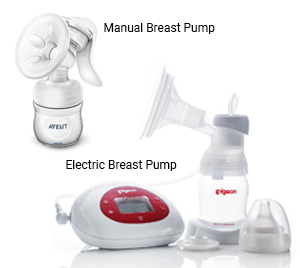 Should you get the manual or electric breast pump? Most breastfeeding mothers find using a breast pump easier than expressing milk manually. A lactation consultant or confinement nanny can help determine which type of pump is better for mother. If possible, it is recommended to use the electric one so that mother can have a more and easier rest. The confinement nanny can offer support and help if problems arise.
Should you get the manual or electric breast pump? Most breastfeeding mothers find using a breast pump easier than expressing milk manually. A lactation consultant or confinement nanny can help determine which type of pump is better for mother. If possible, it is recommended to use the electric one so that mother can have a more and easier rest. The confinement nanny can offer support and help if problems arise.
During the first several weeks of your child’s life, it is best to nurse exclusively to help you and your baby learn how to breast feed and to be sure your milk supply becomes well established. Once mummy’s milk supply is established and feel confident that both mummy and baby are doing well with breast-feeding, mummy may give the baby an occasional bottle of breast milk. This allows others, such as your partner or grandparent, an opportunity to feed the baby. It also provides mummy a break if she need one.
Do keep in mind that the feel of a bottle nipple in a baby’s mouth is different from that of the breast. The way a baby sucks from a bottle nipple is also different. Therefore, it take some practice for your baby to be comfortable with a bottle nipple. Beware that he or she may be reluctant to take a bottle from mummy because baby associates mother’s voice and scent with breastfeeding.
If you intend to invest in a pump, here are some factors to consider in deciding whether you should get an electric or manual breast pump:
- How often is the usage? Hand pump may be good enough if mother’s milk supply is well established or she is only away from baby occasionally. Hand breast pumps are small and inexpensive. However, if mother is going back to work or need to be away from baby for hours, it is better to invest in an electric breast pump instead.
- How quickly do you need to pump? A typical pumping session for one breast usually lasts around 15 min. An electric breast pump is a good investment if you need to pump during working hours or rushing for time. There are certain electric breast pump models which save time by pumping both breasts together as well. Double breast pumps can cut pumping time in half.
- How much are you willing to spend? While manual modes generally cost less than $50, electric pumps that include a carrying case and insulated section for storing milk may cost more than $200.
- Is it easy to assemble or convenient in carrying the pump around? It can be pretty frustrating if it cannot. If there is a need to carry the pump everyday, be sure to choose a light weight breast pump. Some models has a carrying case that allow you to store the expressed milk. Noise level of the breast pump can also be a factor to your decision as well.
